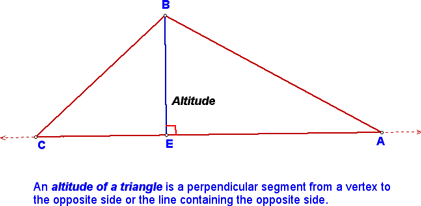
If you're familiar with XML, you will also be interested in the KML 2.2 Schema. The id is a standard XML ID.īecause KML is an XML grammar and file format, tag names are case-sensitive and must appear exactly as shown here.
#Altitude geometry definituon update#
This id is used by the KML update mechanism (see ) for files loaded with a NetworkLink. Understanding this object-oriented hierarchy is also a good way for you to learn KML, since you can easily see groupings of related elements.Īll elements derived from Object can have an id assigned to them. They are a useful way for a single element to serve as the programmatic foundation for multiple similar (but different) derived elements. Note that abstract elements (shown in boxes in the diagram) are not actually used in KML files. Note: Click an element name in this diagram to jump to its entry in the reference section. The complete XML schema for KML is located at. The complete specification for OGC KML can be found at. It is maintained by the Open Geospatial Consortium, Inc. KML is an open standard officially named the OpenGIS® KML Encoding Standard (OGC KML).

It contains all of the elements that belong to Feature, and it adds some elements that are specific to the Placemark element. For example, Placemark is a special kind of Feature.

In this diagram, elements to the right on a particular branch in the tree are extensions of the elements to their left. The class tree for KML elements is shown below. The difference are extremely small for practical purposes this can be ignored in most fields and orthometric height is usually said to be the same as geometric height.This section contains an alphabetical reference for all KML elements defined in KML Version 2.2, as well as elements in the Google extension namespace. In the real world however, the orthometric height (measured along the curve of the plumb line) is thus not equal to the geometric height (which measures along a straight line). Therefore the plumb line in the ISA model is straight. Within the ISA model, orthometric height and geometric height are the same, because the model assumes the earth is uniform, spherical and non-rotating. Due to rotation of the earth and gravitational anomalies due to an irregular mass distribution in the earth, the plumb line curves. The plumb line however, is not a straight line. Image source: ScienceDirect: Evaluation of the various orthometric height systems and the Nigerian scenario – A case study of Lagos State The orthometric height of a point is the distance H along a plumb line from the point to a reference height (typically the mean sea level). With $r = 6356766m$ the radius of the nominal (spherical) earth. This $g_0 = 9.80665$ m/s 2 is used to convert between geopotential height $H$ to geometric height $h$.įor this purpose the ISA model assumes a non-rotating earth with uniform mass distribution, so that only Newton's gravitation law can be used to obtain the relation between $H$ and $h$: It furthermore assumes a standard acceleration due to gravity, conforming to a latitude of 45.32'33". The reference height (0 meters) of the model is the mean sea level. The ISA model uses a hydrostatic equation to calculate the pressure differential over a geopotential height difference.

7488, the geometric height is equivalent to the orthometric height.

In the ICAO Standard Atmosphere model, as described in ICAO Doc.


 0 kommentar(er)
0 kommentar(er)
